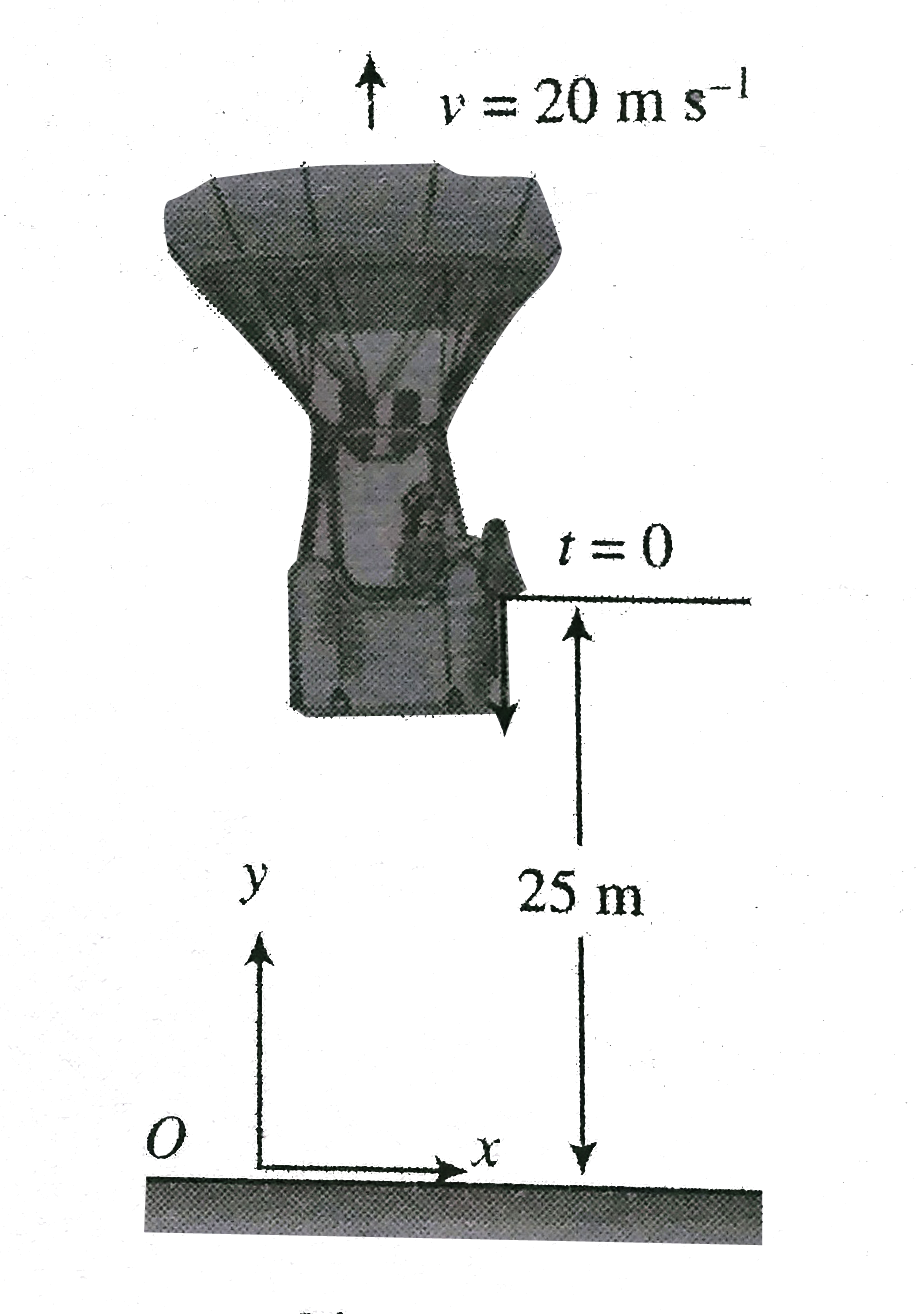A balloon of weight w is falling vertically downward with a constant acceleration a(>g). The magnitude of the air resistance is
w
w(1+ag)
w(1−ag)
wag
The correct Answer is:C
( c) Suppose air resistance is F (upwards), then from equation of motion of balloon, we have
F=mass×acceleration=Wg.a
∴ F=W(1−ag)
Topper's Solved these Questions
- LAWS OF MOTIONBOOK - DC PANDEYCHAPTER - LAWS OF MOTIONEXERCISE - Assertion and reason
28 Videos
- LAWS OF MOTIONBOOK - DC PANDEYCHAPTER - LAWS OF MOTIONEXERCISE - Match the columns
7 Videos
- LAWS OF MOTIONBOOK - DC PANDEYCHAPTER - LAWS OF MOTIONEXERCISE - Check point 5.4
20 Videos
- KINEMATICS 1BOOK - DC PANDEYCHAPTER - KINEMATICS 1EXERCISE - INTEGER_TYPE
15 Videos
- LAWS OF THERMODYNAMICSBOOK - DC PANDEYCHAPTER - LAWS OF THERMODYNAMICSEXERCISE - Level 2 Subjective
18 Videos
Similar Questions
Knowledge Check
A balloon of gross weight w newton is falling vertically downward with a constant acceleration a(<g). The magnitude of the air resistance is:
AwBw(1+ag)Cw(1−ag)Dw(ag)A man in a balloon throws a stone downwards with a speed of 5m/s with respect to balloon. The balloon is moving upwards with a constant acceleration of 5m/s2. Then velocity of the stone relative to the man after 2 seconds is.
 A10m/sB30m/sC15m/sD35m/s
A10m/sB30m/sC15m/sD35m/s
A bomb is falling vertically downwards into the air it explodes in air, then
View SolutionA bomb is falling vertically downwards into the air it explodes in air, then
View SolutionA feather of mass 2gram is falling vertically downwards with a constant velocity. What is the net force acting on it?
View SolutionA man in a balloon throws a stone downwards with a speed of 5m/s with respect to balloon. The balloon is moving upwards with a constant acceleration of 5m/s2. Then velocity of the stone relative to the man after 2 seconds is.

View SolutionA hot-air balloon of mass M is descending vertically with downward acceleration of magnitude a. How much mass (ballast) must be thrown out to give the balloon an upward acceleration of magnitude a? Assume that the upward force from the air (the lift) does not change because of the decrease in mass.
View SolutionA hot-air balloonist, rising vertically with a constant velocity of magnitude 20ms−1, releases a sandbag at an instant when the balloon is 25m above the ground . After it is released, the sandbag is in free fall. Sketch ay−t,vy−t, and y−t graphs for motion, taking origin at ground.
 .
.
View Solution
